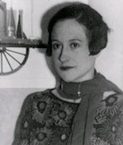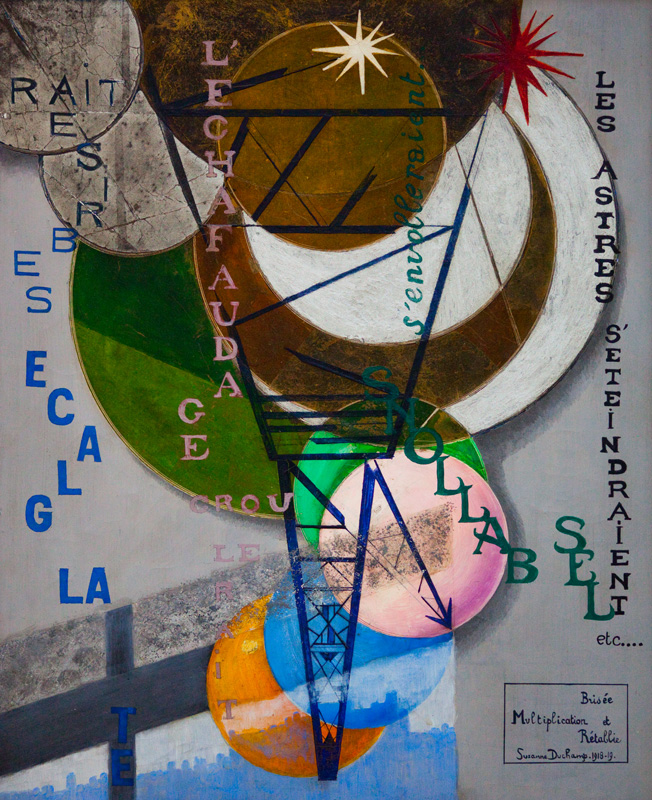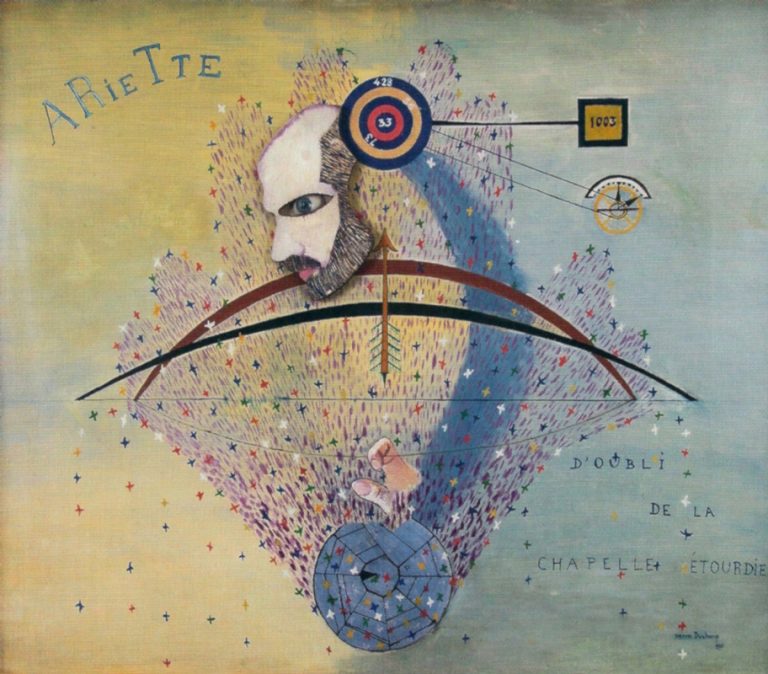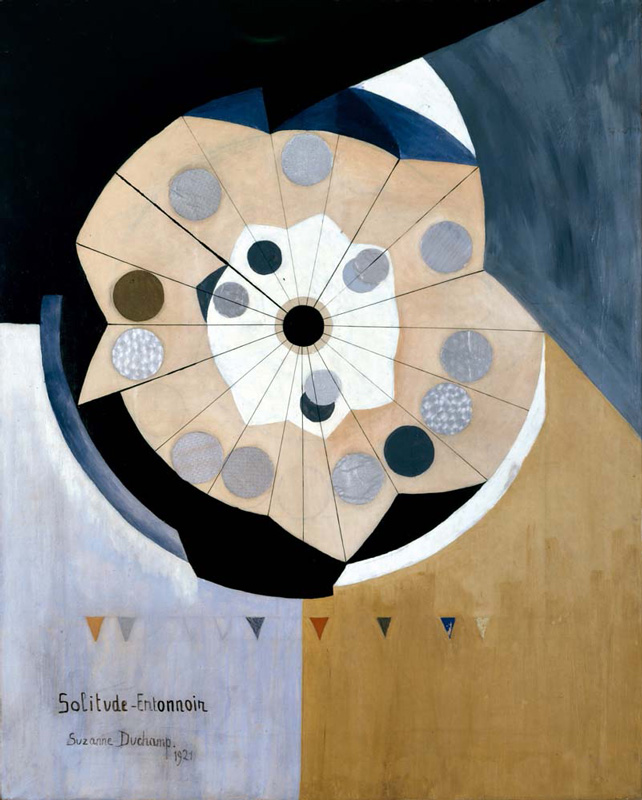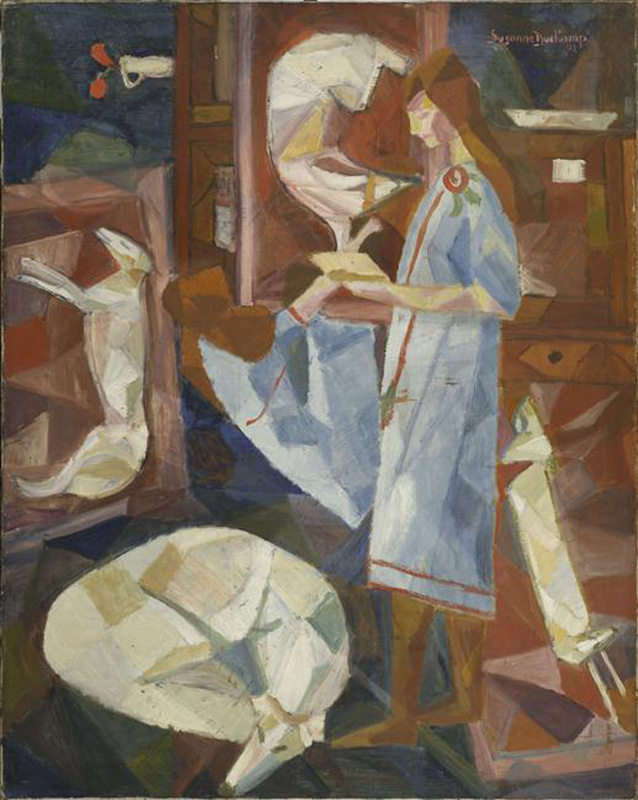The artistic beginnings
Suzanne Duchamp was born on October 20, 1889, in Blainville-Crevon, Normandy. She was the fourth child in a family of six, with four siblings who dedicated their lives to artistic endeavors: Jacques Villon (1875-1963), Raymond Duchamp-Villon (1876-1918), and Marcel Duchamp (1887-1968). Following the example set by her elder brothers, she enrolled in the Rouen School of Fine Arts in 1905. In 1912, she participated in her inaugural exhibitions at the Salon des Indépendants and the Société Normande de Peinture Moderne.
The turning point of World War I
At the outset of the First World War, she made the decisive choice to enlist as a nurse. By late 1914, her brother Marcel, who had relocated to the United States, instructed her to clear out his Paris studio. It was there that she uncovered two groundbreaking “ready-made” pieces: the « Bicycle Wheel » and the « Bottle Rack ».
Following Marcel’s directive, she assertively added “after Marcel Duchamp” to the « Bottle Rack ». During this period, Suzanne confidently produced her first works in a dynamic “mechanomorphic” style. In the autumn of 1916, she met Jean Crotti, a painter and a close friend of Marcel’s, who had recently returned from the United States. They married in Paris in April 1919. While Marcel Duchamp traveled in Buenos Aires, he sent them explicit instructions for a “ready-made gift,” asking Suzanne to attach a geometry book to his apartment balcony. The wind was meant to flip through the pages and select the problems. Suzanne boldly transformed this idea into a painting, aptly named “Marcel Duchamp’s Unhappy Ready-Made.”
A DADA artist
Between 1920 and 1923, Suzanne Duchamp and Jean Crotti took part together in the demonstrations and exhibitions of Dadaist artists. Criticism was largely negative, and the public hostile. At the entrance to the Salon d’Automne in 1921, Suzanne Duchamp and Jean Crotti distributed a leaflet announcing the creation of their new Dadaist movement called “TABU”.
Landscape et Nature
From 1927 until the end of her life, Suzanne Duchamp dedicated herself to landscape paintings and floral works on paper. She consistently showcased her talent by participating in the Salon d’Automne and the Salon des Indépendants, exhibiting her art in prestigious galleries in both France and the United States, largely thanks to the unwavering support of Katherine S. Dreier.
After Jean Crotti’s death on January 30, 1958, Suzanne continued to reside in their apartment and studio at 5, rue Parmentier in Neuilly-sur-Seine, where they had collaborated on numerous works. She passed away on September 11, 1963, and was laid to rest in the family vault in Rouen.
